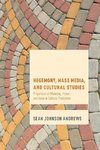
-
 Anglický jazyk
Anglický jazyk
Asian fairy tales
Autor: Source: Wikipedia
Source: Wikipedia. Pages: 32. Chapters: Chinese fairy tales, Indian fairy tales, Indonesian fairy tales, Japanese fairy tales, Korean fairy tales, Malaysian fairy tales, Turkish fairy tales, Vietnamese fairy tales, Urashima Taro, Panji, The Tale of the Bamboo... Viac o knihe
Na objednávku
13.77 €
bežná cena: 15.30 €
O knihe
Source: Wikipedia. Pages: 32. Chapters: Chinese fairy tales, Indian fairy tales, Indonesian fairy tales, Japanese fairy tales, Korean fairy tales, Malaysian fairy tales, Turkish fairy tales, Vietnamese fairy tales, Urashima Taro, Panji, The Tale of the Bamboo Cutter, The Story of Tam and Cam, Bawang Putih Bawang Merah, The Tiger, the Brahmin and the Jackal, What the Rose did to the Cypress, The Wolf of Zhongshan, Janghwa Hongryeon jeon, Momotaro, The Bronze Ring, Ye Xian, Damarwulan, The Silent Princess, Shita-kiri Suzume, The Crab and the Monkey, Beauty and Pock Face, Kachi-kachi Yama, Preeta Samarasan, Issun-boshi, Saat Bhai Champa, The Pretty Little Calf, My Lord Bag of Rice, Jackal or Tiger?, Bunbuku Chagama, The Boy Who Found Fear At Last, Thakurmar Jhuli, The King Who Would Be Stronger Than Fate, Madschun, The Fox Sister, The Stonecutter, Hanasaka Jiisan, The Fisher-Girl and the Crab, The Boy Who Drew Cats, The Snake Prince, The Jogi's Punishment, Diamond Cut Diamond, The Husband of the Rat's Daughter, Schippeitaro, The Water Mother, The Hundred-knot Bamboo Tree, The Cat's Elopement, The Pot Bears a Son, How the Daughter-in-Law Got the Coins, The Fountain of Youth. Excerpt: Panji (formerly Pandji) was a legendary prince in East Java, Indonesia. His life has formed the basis of a cycle of Javanese stories. Along with the Ramayana and Mahabharata, this cycle is the basis of various poems and a genre of wayang (shadow puppetry) known as wayang gedog -- "gedog" meaning "mask". Panji tales have also spread from East Java to be a fertile source for literature and drama throughout Malaya, Thailand, and Cambodia. Panji and the other characters in the Panji cycle appear with various names in different versions of the tales. Other names for Panji include Raden Panji, Raden Inu, Inu (of) Koripan, Ino (or Hino) Kartapati, Cekel Wanengpati, and Kuda Wanengpati of Janggala. Panji also found as a name of Prince of the monarchy in Tabanan, rules by Shri Arya Kenceng on 1414 (Babad Arya Tabanan.) In Thailand, he is called Enau (Thai: ) or Enau (of) Kurepan, or Raden Montree. Panji is the prince of Kuripan (Koripan) or Janggala. He is usually depicted in an unadorned helmetlike rounded cap. The mask for Panji has a smooth white or green face; narrow, elongated eyes; a straight and pointed nose; and delicate, half-open lips. Panji is engaged to be married to Candra Kirana (also known as Sekartaji), the princess of Daha (Kediri), when she mysteriously disappears on the eve of the wedding. Later in the story, she is sometimes called Kuda Narawangsa when she appears disguised as a man. Panji's principal adversary is Klono (Kelana Tunjung Seta), a ferocious king who desires Candra Kirana and tries to destroy Daha to get her. Other common characters are Gunung Sari (Candra Kirana's brother), Ragil Kuning or Dewi Onengan (Panji's sister married to Gunung Sari), Wirun, Kartala and Andaga (relatives and companions of Panji). Balinese painting of Prince Panji meeting three women in the jungleThere are many differing versions and episodes of the overall story. In one version, The main story of Panji tells about the romance between Prince Panji and Princess Kirana;
- Vydavateľstvo: Books LLC, Reference Series
- Rok vydania: 2020
- Formát: Paperback
- Rozmer: 246 x 189 mm
- Jazyk: Anglický jazyk
- ISBN: 9781157228592












